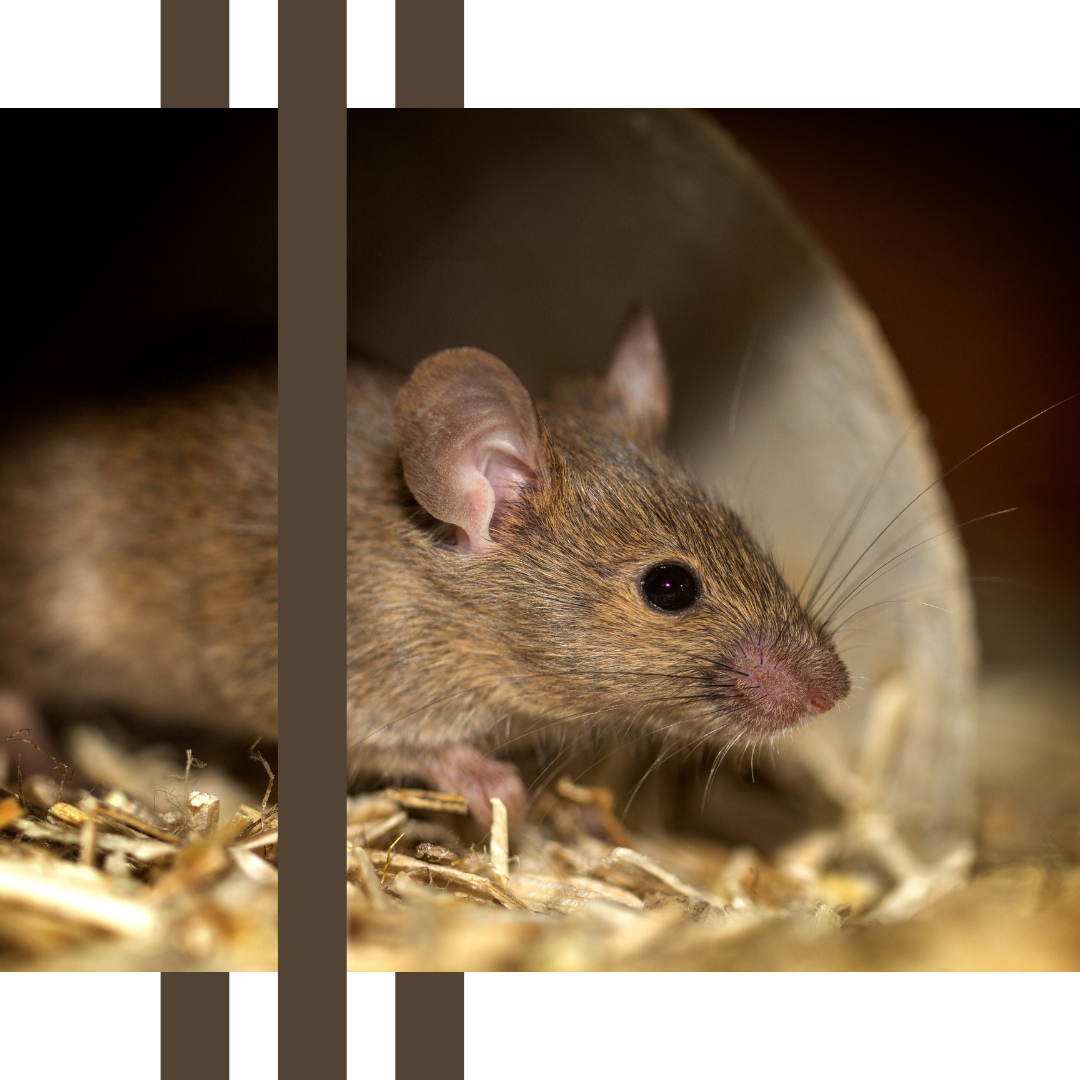
Rodent Removal & Control
When we think of life in Central Iowa, many of us envision serene landscapes and the peaceful ebb and flow of seasonal changes. However, this idyllic setting is also a haven for rodents, notably the Norway Rat and the House Mouse, which can often find their way into our homes, garages, and barns.
The Trail Of Trouble They Bring
We mainly encounter two types of these nuisances. The House Mouse is a small creature, often gray in color, and surprisingly agile. Then we have the Norway Rat, which is more robust, sporting a brown or gray coat. While their presence in the wild might not stir concern, their entry into human spaces turns them from mere animals into significant pests.
To say these rodents are a problem would be an understatement. They are more than mere annoyances; they are a health risk and a danger to our property. Their droppings and urine can be potential carriers of diseases such as Hantavirus and Salmonella. Both bacteria and viruses may reside in their waste, and when these are accidentally ingested or inhaled, they can lead to severe health issues, especially in vulnerable individuals like children and the elderly.
Moreover, rodents have a knack for gnawing on various materials, including electrical wiring, which poses a significant safety hazard. Faulty wiring is one of the leading causes of household fires, and unfortunately, these animals contribute to that statistic. Besides, they have a rapid breeding cycle; if not checked, a couple can multiply into hundreds within a year, thus exacerbating the problem exponentially.
Getting Rid Of Rodents
When it comes to handling rodents, many homeowners resort to do-it-yourself solutions, thinking traps and poison will do the job. However, these methods come with their own sets of challenges and risks. For instance, traps need to be carefully placed and regularly monitored. A misplaced or forgotten trap not only makes it ineffective but could also become a danger for pets or kids in the house. Similarly, poisons can be harmful to non-target animals and humans. Also, a one-time effort won't suffice; these nuisances are intelligent and adaptive, making it hard to completely eradicate them without expert intervention.
Rodents are not just scavengers; they are intelligent beings with a remarkable ability to remember routes. Once they find a path to a food source, they will remember it, making it even harder to keep them out. Moreover, they're good climbers, swimmers, and even jumpers. They can scale walls, swim across drains, and jump to great heights, making them highly agile intruders.
Statistics paint a grim picture. The National Pest Management Association reports that rodents invade an estimated 21 million homes in the United States each winter. Furthermore, nearly one-third of American homeowners have experienced a rodent problem. It's a widespread issue that requires immediate attention.
If you find yourself dealing with a persistent rodent problem on your property, it's time to act. Backwater Wildlife Solutions is here to help you regain control of your environment. Contact us today for an estimate.
Frequently Asked Rodent Questions
Q1. Can These Pests Actually Swim? If So, Can They Enter My House Through Plumbing?
A1. Yes, certain rodents like the Norway Rat are excellent swimmers. These animals are well-adapted to water and can hold their breath for an extended period, allowing them to navigate through sewer systems and even enter homes through plumbing fixtures. While the occurrence is relatively rare compared to other methods of entry, it's still a concerning possibility. Understanding the full range of their capabilities can help you better appreciate why professional intervention is often needed to manage these complex nuisances effectively. Preventive measures can include mesh guards and one-way valves on drainage systems, but it's vital to consult a professional for a comprehensive solution.
Q2. Can Changes In Agricultural Practices Impact The Behavior Of Rodents In Central Iowa?
A2. It's an aspect not often considered, but changes in agricultural practices can have a significant impact on the behavior and movement of these nuisances. For example, if there's a shift from corn to soybean farming or if farmers start using different kinds of pesticides, the natural habitat and food sources for these pests can change. This, in turn, can cause these animals to look elsewhere for sustenance, often leading them to human dwellings. So yes, agricultural practices can indirectly affect the likelihood of encountering these pests in your home or property. This makes it all the more important to stay informed about broader environmental factors and consult with pest control professionals who understand these dynamics.
Q3: Are Rodents More Active During Certain Phases Of The Moon?
A3. While it may sound like folklore, some people have observed heightened activity levels in nocturnal animals during specific lunar phases, and they wonder if the same is true for these pests. The scientific community is still divided on the subject, but some studies suggest that increased natural light during a full moon may make these pests more cautious when foraging, thus altering their usual patterns. This means you might notice a decrease in activity during these times, but it shouldn't be taken as a sign that the problem is resolving itself. Their natural cycles are adapted to a wide range of environmental factors, and it's unlikely that lunar cycles alone will have a significant impact on their populations.
All Rights Reserved | Backwater Wildlife Control

